Split-Dalmatia County Launches Cro Care Website to Facilitate Testing Needs for Tourists
June 23, 2021 - Cro Care allows tourists in Split-Dalmatia County to find coronavirus testing centers, report their health, and contact their embassy and all emergency services they may need.
The Split-Dalmatia County Civil Protection Headquarters presented the Cro Care web platform through which tourists will be able to find out in just a few clicks where and how to get to coronavirus testing centers, report their health, but also contact their embassy and all emergency services they may need, reports HRTurizam.
The Cro Care system works so that the platform automatically recognizes the user's current location and thus shows them the nearest emergency services locations and their contacts. They can also use the navigation or fill out the necessary forms.
The platform currently contains 30 testing sites, 25 embassies and consulates, and nine health centers and hospitals in Split-Dalmatia County.
"This is one in a series of activities of the Split-Dalmatia County Civil Protection Headquarters to make it easier for our guests, both foreigners, and locals, to stay with us. The web platform is a significant step forward because our guests will have all the information in one place," said Damir Gabrić, Chief of the County Civil Protection Headquarters.
“This application provides us with unlimited possibilities for expanding to other user needs such as pharmacies, police, etc. Furthermore, the system itself will provide the Tourist Board with vital statistics showing which users are from which countries, which language area they searched for the terms they needed, from hospitals, emergency services of covid testing centers, embassies, etc. The system is designed to recognize the user's speaking area automatically, and the website is offered in their language with all the translated names of institutions and the necessary information that is there," said the author of the application, Dejan Grepo from webLab.
Joško Stella, director of the Split-Dalmatia County Tourist Board, pointed out that their goal is to improve the application and expand it to other Dalmatian counties.
From next Thursday, July 1, thanks to the favorable epidemiological situation in the country, Croatia will further mitigate epidemiological measures. As confirmed by the National Civil Protection Headquarters, there will be no limit on the number of participants at events attended by people with digital EU certificates. Such events will be organized without a time limit.
The move will make it possible to organize a variety of events across the country. In addition, the organizers of the event will have access to a mobile application through which they will be able to read the QR code from the digital EU certificate, and the consent of the local civil protection headquarters will be required to hold the event.
For more, follow our travel section.
Split Zvončac EURO 2020 Fan Zone Announced: The Details
June 9, 2021 - The Split Zvončac EURO 2020 Fan Zone has finally been announced, where football fans can gather to watch all European Championship matches.
Citizens of Split likely remember the last football Fan Zone, organized in 2018 in Đardin, during the World Cup. This year, the EURO 2020 fan zone will work from June 11 to July 11 at the legendary Zvončac park, a location many Split citizens adore, reports Slobodna Dalmacija.
The Fan Zone will also be organized by Damir Karaman, with associates from the company "Karaman Koncert," which has so far successfully organized numerous sports, cultural, and entertainment events in Split.
Visitors will be able to watch the games on a large screen and enjoy food and drink.
"During the duration of the tournament, we will organize various prize games and events," said Damir Karaman.
Which performers and bands will play at the Fan Zone?
"We are still negotiating, but it will be a surprise for the days off at the European Championships, when we will fill the space with various programs.
It is normal for fan zones to be held in city parks so that people can hang out and have fun. Zvončac is ideal for us because it is bigger than Đardin.
That is why I, in cooperation with the Split and Split-Dalmatia County Tourist Boards, organized it in our city. Well, God willing, we will create a fan zone next year for the World Cup," said Damir Karaman.
Numerous tourists, mostly foreigners, also visited the last fan zone in 2018.
"All foreigners who were in Split knew about the fan zone, and when their national teams played, but also others, foreign tourists came there to watch the matches.
We must emphasize that several media houses reported from the Fan Zone - the German Bild, Danish television, and reputable portals. HTV, RTL, and Nova TV also reported from the fan zone, so it was more marketing for the city itself, and great promotion," said Karaman and pointed out that he will organize everything according to current epidemiological measures, in agreement with the Civil Protection Headquarters.
Admission will be free
The fan zone organized during the 2018 World Cup proved to be a hit and added value to Split.
It was attended better than any event in Đardin and passed without a single incident, with a crowded and brilliant fan atmosphere.
As before, admission will be free for all citizens and tourists, no matter the program.
To follow the latest sports news in Croatia, follow TCN's dedicated page.
To learn more about sport in Croatia, CLICK HERE.
New Map Shows Split-Dalmatia County Development Projects Transforming Region
May 1, 2021 - A map of the Split-Dalmatia County development projects for better project visibility.
Jutarnji List reports that numerous development projects have been started and largely completed in the Split-Dalmatia area in recent years. Through its administrative departments and institutions, the county has actively and constantly invested in the balanced development of the county through several most essential categories. Split-Dalmatia County has the most local governments, with as many as 16 cities and 39 municipalities, including county projects and investment programs. For better project visibility, and in cooperation with the Public Institution RERA S.D. as the regional coordinator of that county and all county services, a map of development projects of the Split-Dalmatia County was made. The map shows the geographical distribution of development projects through a total of eight categories. It is designed as a tool that will be updated with new projects in the future.
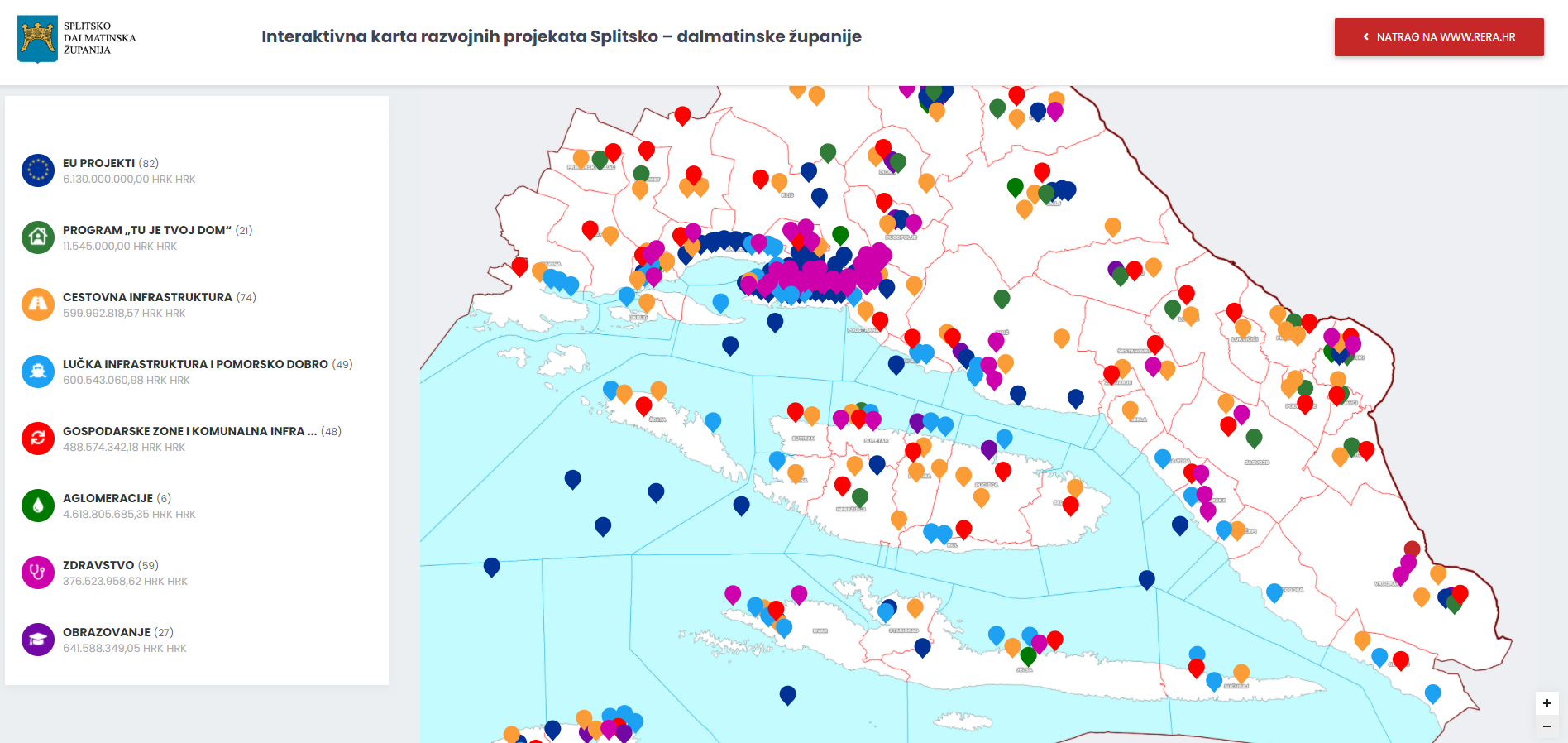
Eight categories refer to the most critical areas of investment, so it is evident that in recent years almost 600 million kuna has been invested in road infrastructure through numerous projects of the competent county administrative department, projects of the County Road Administration, but also the most critical projects of Croatian Roads. Port infrastructure and maritime property, in a county that is largely oriented towards the sea, is a significant development resource, so through this category, more than 36 million kuna has been invested in the maritime domain, in the areas of various local governments in the coast and on islands. In recent years the County Port Authority has started and partly already implemented development projects for the construction, rehabilitation and arrangement of port infrastructure in the value of more than 427 million kuna.
Economic zones and communal infrastructure were developed through 48 individual investments worth more than 34 million kuna.
In the county's area, six investment projects in water supply and drainage have been launched, which, with the partnership and support of the county services, are being implemented by Croatian Waters. These are projects worth more than four billion kuna. They relate to the Agglomeration SPLIT-KLIS-DUGOPOLJE-PODSTRANA-SOLIN, Agglomeration KAŠTELA-TROGIR-DISTRICT (SPLIT) -SEGET, Agglomeration TRILJ-ISLAND-DICMO JRACKA, Aglome STARI GRAD, and IMOTSKI Agglomeration.
Health care has been a current topic before, and especially in recent years, with constantly growing needs, to which the county responded with projects of almost 377 million kuna. Investments were made in 12 branches of Health Center facilities, equipment and premises for the Teaching Institute for Public Health, eight branches of the. Split-Dalmatia County Institute of Emergency Medicine, procuring 35 ambulances, but also strengthening human capacity through more than 80 specialist medical training. KBC Split, as the backbone of the health system, in cooperation with the County, is implementing projects worth more than 427 million kuna. The Split-Dalmatia Pharmacies made a significant step forward with the realized project of building and equipping the Galenic-Analytical Laboratory worth 70 million kuna.
As one of the categories, the map shows education, i.e., projects of construction, rehabilitation, reconstruction, and energy renovation of schools and dormitories, 17 facilities, a total of 105,694,040.02 kuna, and two projects of regional centers of excellence - Tourist School Split - 170 million kuna and Crafts - technical school Split - 82 million kuna. The projects carried out by the University of Split are also presented, and which were also realized with the support and partnership of the county.
Although the map defines the category "There is your home," the program that encourages demographic renewal through incentives for young families from rural areas to build and adapt houses, where a total of 120 individual contracts are visible distributed in 21 local government units, demographic renewal of rural areas is encouraged through several other measures and incentives.
One of the crucial categories on the map is EU projects. Those projects in which the holder or partner is a county or one of the county institutions are presented, and they relate to various economic and social sectors. Numerous projects listed in other categories are financed from EU funds, such as some significant road and port infrastructure projects, energy renovation projects of schools, construction and equipping of branches of the Health Center or projects of KBC Split, University of Split, and agglomerations. EU funds are the flywheel and wind in the back of a large number of our development projects, and over the past year, the county has gathered staff in its services who successfully implement the started and prepare new EU projects. In Split-Dalmatia County, more than 6 billion and 130 million kuna worth of projects financed from EU funds has been contracted so far.
For more, follow our business section.
Split-Dalmatia County COVID-19 Testing Points Announced for 2021 Tourist Season
March 19, 2021 - At the 6th Family Accommodation Forum, Split-Dalmatia County COVID-19 testing points were announced for the season.
HRTurizam reports that the 6th Split-Dalmatia County Family Accommodation Forum was held earlier this week, which brought together Split-Dalmatia County representatives - the County Tourist Board, the Split Tax Administration, the Split Airport, and the County Teaching Institute for Public Health.
The Forum aimed to offer renters answers to many questions related to the season ahead. The main topic of discussion was safety, i.e., focusing on the fact that compliance with epidemiological measures will be the main prerequisite for the season.
”For six years now, the Croatian Chamber of Commerce - Split County Chamber has organized regional Family Accommodation Forums to gather and support this important and growing segment of our tourist offer. Namely, micro-entrepreneurs in family tourism give a great deal of effort in achieving significant results of Croatian tourism, so in 2019, private accommodation in Split-Dalmatia County participated with almost 60 percent in overnight stays and proved to be extremely flexible in the past, challenging year," said the president of ŽK Split Jozo Tomaš.
Due to the coronavirus pandemic, the number of private renters in Split-Dalmatia County decreased by 11 percent, and in the city of Split by almost 15 percent.
"That is why preparing for another specific season is very important to us, and that is why we organized the Forum so that renters, who are in direct contact with guests, get clear and current information," said Gordana Piteša, head of the Family Tourism Association - Split County Chamber.
The President of the Family Tourism Association of the Croatian Chamber of Commerce, Martina Nimac Kalcina, emphasized how important such events and the work of the Association and professional associations are to achieve common solutions and joint measures that will be the goal of all of us.
"This year, we are not talking about the promotion of our beauties, but about the promotion of safety, simplicity of procedures and travel, good organization. By mid-May, when the trips should start, we have time to prepare as well as possible, but we have to put it in fifth gear," said Nimac Kalcina.
Director of the Split-Dalmatia County Teaching Institute for Public Health, Dr. Željka Karin, and epidemiologist Diana Nonković, once again appealed for respect and adherence to all epidemiological measures.
"Testing points will be on Brač, Hvar, Vis, Makarska, Imotski, Trogir, Sinj and Split. A testing point of the Teaching Institute for Public Health is always open in Split; in a month, we will have to relocate the testing point that is now in the ferry port because of cruisers, and we are also talking about a testing point at Split Airport," said Karin.
The director of the County Tourist Board, Joško Stella, said that this year, as well as last year, they are ready to co-finance testing points for tourists.
"However, it is essential to be a green zone, that is, to have as few infected as possible and then to do strong marketing. The problem is partly that our major markets, primarily the Czech Republic, Poland, and Germany, are in a difficult epidemiological situation. Still, I hope that this will change for the better in the next two months," said Stella and announced Split-Dalmatia County Tourist Board training and projects.
Pero Bilas from Split Airport confirmed that the Airport is ready for the season, that they are in continuous contact with all carriers, and that all companies are interested in flying.
"We have announcements for many airlines for April, but we will see which of them will be realized. In any case, the whole industry is ready for the season and is waiting for a low start," said Bilas.
As much as their areas of activity were different, all participants agreed that there is still time until the beginning of the season for the numbers to improve. The situation to calm down, and for that to happen, the basic cooperation and personal responsibility of each of us, i.e., adherence to epidemiological measures which will paint Split-Dalmatia County as a green destination.
For the latest travel info, bookmark our main travel info article, which is updated daily.
Read the Croatian Travel Update in your language - now available in 24 languages.
Spaladium Arena Prepared as Mass Vaccination Site in Split
February 28, 2021 - Preparations are coming to an end at the Spaladium Arena, soon opening as a mass vaccination site in Split.
"Since last Monday, members of the Split-Dalmatia County Red Cross have been working on setting up the Spaladium Arena so that when larger quantities of vaccines arrive, it can be ready to welcome the start of large-scale vaccination. We have arranged 20 cubicles in which people will be vaccinated, which are needed to have a little privacy when getting vaccinated. As far as we are concerned, everything will be prepared by the end of this week at the latest," said Joško Metličić, the new director of the Split-Dalmatia County Red Cross, for Slobodna Dalmacija.
Only those who have been scheduled for vaccination will be able to come to the Spaladium Arena.
"At a specific hour, a certain number of people will be scheduled, who will be called and released to the Arena, where they will sit in prepared places and wait their turn for vaccination. Those who, say, are scheduled at 11 am will not be vaccinated at 9 if they come to the vaccination site two hours earlier. So, the order will have to be respected according to the list and according to the schedule," says Metličić.
Željka Karin, director of the Institute of Public Health of the Split-Dalmatia County, said we could start with large-scale vaccination as early as next week.
"We still don't know how much and which vaccine we will get next week. We received about six thousand doses of PfizerBiontech and AstraZeneca vaccines this week, and Moderna did not come, although it was announced. We distributed all the obtained vaccines to family doctors and special duty points, where people are also vaccinated. How many people have been vaccinated with those six thousand doses so far? We don't know yet. However, I think that next week we should not receive less than six thousand doses," says Dr. Karin.
Interest in vaccination is high.
"People are calling; they want to get vaccinated. If we had sufficient quantities of vaccines, we in Split-Dalmatia County would quickly vaccinate the population. We would have a satisfactory number of vaccinated by June this year at the latest. But for now, unfortunately, the vaccine is not in sufficient quantities. Next week we could put Spaladium Arena into operation to see if everything will work well and so that we can, if there are any shortcomings, fix those shortcomings so that it is ready for the real mass vaccination, which I expect in mid-March," explains Dr. Karin.
The number of cases in Split-Dalmatia County started to grow, connected with several events where groups of people were noticed (family celebrations, socializing in apartments).
"In the last two days, we have a slight decline, and I want to believe that there will continue to be a decline in the number of new infections. But when the terraces of catering facilities open, if the numbers start to go wild again, they will need to think about a possible closure again because it won’t make sense. I believe that it is in everyone's interest to have a tourist season, and I believe that it is in the interest of all private individuals who have restaurants and cafes to work over the summer. Therefore, I ask everyone and call on everyone to take responsibility and to respect all epidemiological measures, so that they would not be surprised and so that sometime in April they would not be forced to close catering facilities again," concluded Željka Karin.
To read more about COVID-19 in Croatia, follow TCN's dedicated page.
Initiative to Rename Split Airport to be Launched, Says County Prefect
February 5, 2021 - Split-Dalmatia County Prefect Blaženko Boban announced that in agreement with local mayors, the competent ministry, the airport administration, and other stakeholders, he would launch an initiative to rename Split Airport.
Famous for saying, "Forgive me, Lord, for I am a Dalmatian," Saint Jerome is the protector of Dalmatia and is honored on Saint Jerome's Day on September 30. Interestingly, according to the oldest and most famous Encyclopedia Britannica, Jerome was born in Stridon, a village near Emona on the border of Dalmatia and Pannonia, probably near modern Ljubljana in Slovenia.
However, as it has yet to be scientifically proven, Split-Dalmatia County Prefect Blaženko Boban doesn't seem to mind, so much that he will launch an initiative to confirm just how much Saint Jerome means to Dalmatia, reports Slobodna Dalmacija.
"Saint Jerome is our saint, the protector of Dalmatians and Split-Dalmatia County. His birthplace, which has never been scientifically proven, was not the motive for choosing Saint Jerome, whom we have long worshiped in our area, as our heavenly protector. We sincerely hope that the whole world will worship and respect him as we do. May he be the protector of the whole world!"
Boban added:
"In my opinion, the wrong direction is to limit the worship of a saint to the place of birth. For example, Saint Dujam, the patron saint of the city of Split, is worshiped by the people of Split, even though he was not born in this area. Through the generations, numerous families give names to their children in honor of our saints, Dujam and Jerome. There is a wide range of names - Dujam, Duje, Jere, Jeronim, Jerko, Jeronima, Jerka ... And the proof of the veneration of Saint Jerome in our area over the centuries is numerous churches dedicated to this saint."
Therefore, in honor of the heavenly patron of Dalmatia, the Split-Dalmatia County Prefect announced the following important step in branding the favorite Dalmatian saint:
"Our exclusive motive is to worship Saint Jerome. Moreover, we plan, in agreement with the mayors, the competent ministry, the airport administration, and other stakeholders, to launch an initiative to rename our Split Resnik Airport after our heavenly patron, Sveti Jeronim Dalmatinac."
To read more about lifestyle in Croatia, follow TCN's dedicated page.
Love Declaration: Billboard Proposal In Split Captures Croatia's Heart
February 1, 2021 – A bold declaration of love that first captured hearts in the city of Split has now travelled all across Croatia, as one city resident requested the hand of his beloved in a billboard proposal
Dominating the skyline on the city's northern shores, Poljud is perhaps the best known - and most visually impressive – football stadium in Croatia. Holding near 35, 000 people and boasting sleekly curved roofs on opposite sides, you can't help but admire the relatively modern arena when it is in eyesight.
But, over recent days, the gaze of city residents has drawn by a competing spectacle nearby. In an unabashed declaration of love and intent, one Split resident has placed a billboard proposal within eyesight of the stadium and the local swimming pools. The petition for marriage has captured the hearts of any passing by.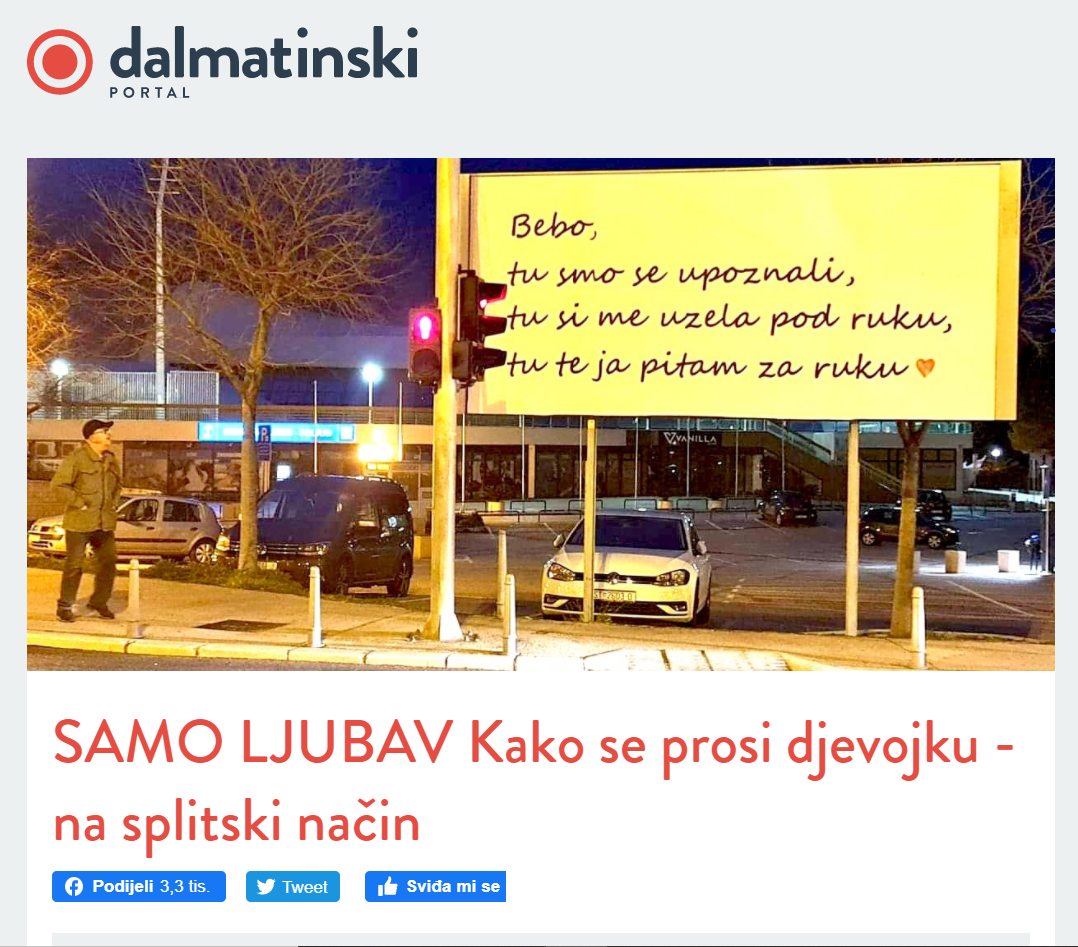 How local media outlet Dalmatinski Portal revealed the romantic request. Their story has since been picked up by national media and captured hearts all across Croatia © Dalmatinski Portal screenshot
How local media outlet Dalmatinski Portal revealed the romantic request. Their story has since been picked up by national media and captured hearts all across Croatia © Dalmatinski Portal screenshot
Translated, the text of the billboard proposal reads:
"Baby
Here's where we met
Here's where you took my hand
Here's where I ask for your hand"
The billboard proposal was pictured and the romantic request revealed by local media outlet Dalmatinski Portal. Many Split residents had already seen the billboard proposal for themselves – it is prominently positioned near the crossroads where Osmih mediteranskih igara, Put Supavla and Ulica Zrinsko Frankopanska meet, in the area of the city which is also called Poljud. But, the story has since been picked up by national media in Croatia and has now raised hearts and smiles all across the country. And they say romance is dead!
No word has yet arrived as to whether the billboard proposal has been accepted. Perhaps the response might be issued in a more private manner? Or, if the recipient is as bold in expression as the proposer, perhaps keep your eyes peeled on the billboards of Split for a joyous 'yes'.
PHOTOS: Incredible Makarska Villa Kuk Immersed In Natural Rock
January 20, 2021 – One of Croatia's current most-adventurous architectural projects, the incredible Villa Kuk near Makarska, actually takes advantage of one of the area's most striking features – the natural rock of the Dinaric Alps foothills almost completely encases its hidden luxury
A villa or apartment on the Dalmatian coast is a dream for many. If not forever, then just for a little while. But, in the race to throw up new builds to satisfy demand, some older tricks can be lost. Some new buildings seem to seep heat in through the very walls, demanding the use of the air conditioner to keep you cool. In older buildings, that's rarely a problem. Built with thicker walls, from older stone, the time-honoured dwellings of Dalmatia are often cool enough without the klima.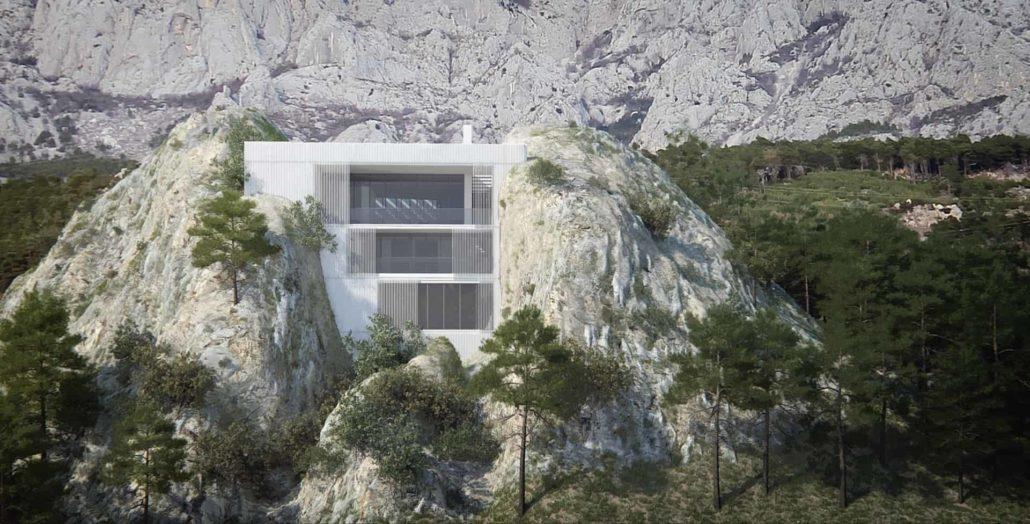
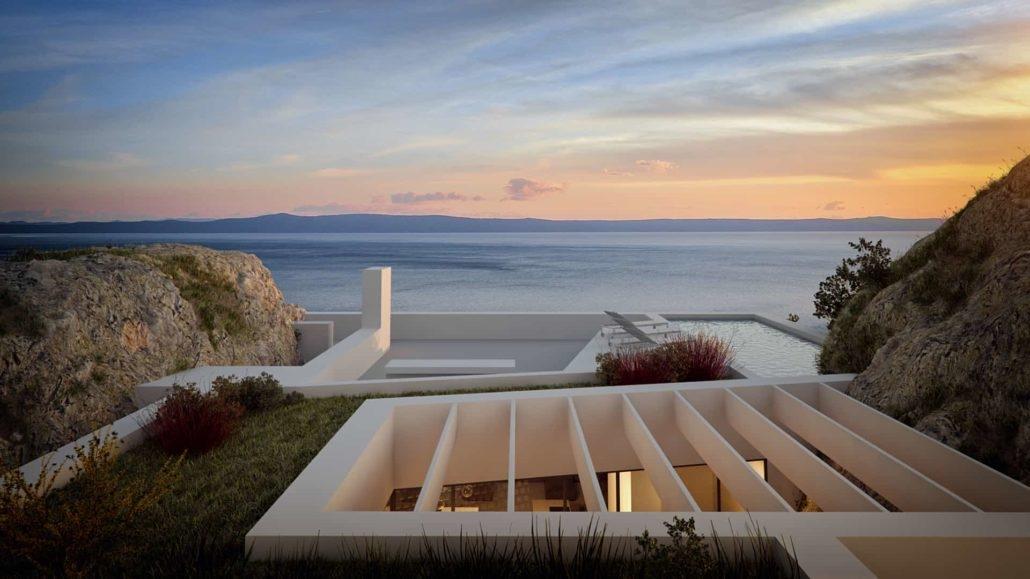
Perhaps this was a point taken into consideration by architect Branka Juras, whose latest project, Villa Kuk near Makarska, has walls broad enough to shelter from even the strongest sun. Her plans for Villa Kuk see the luxurious villa encased in the karst rock of the Dinaric Alps foothills. Sandwiched between two giant slices of rock, Villa Kuk's inner luxury will be all but hidden from view.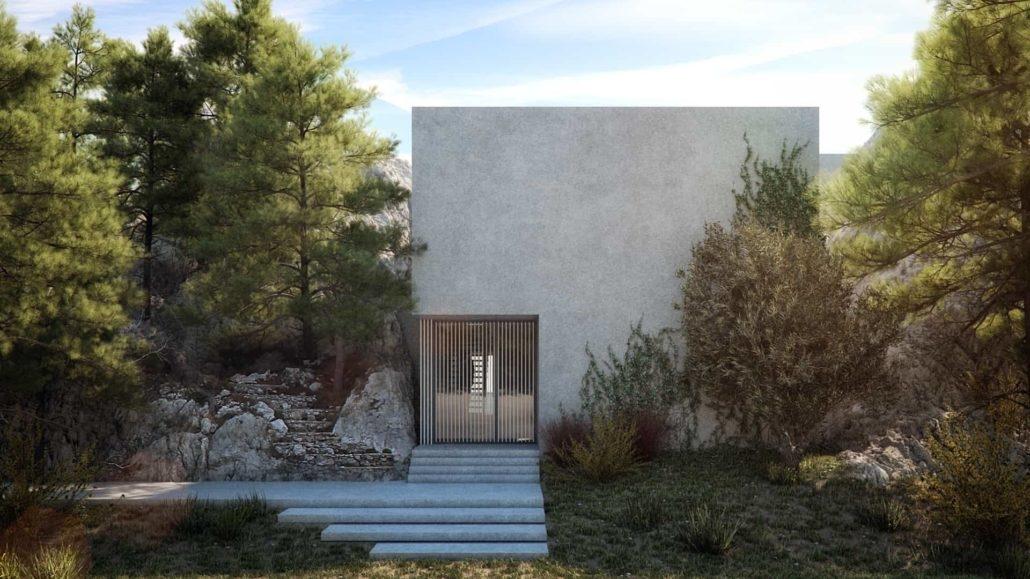
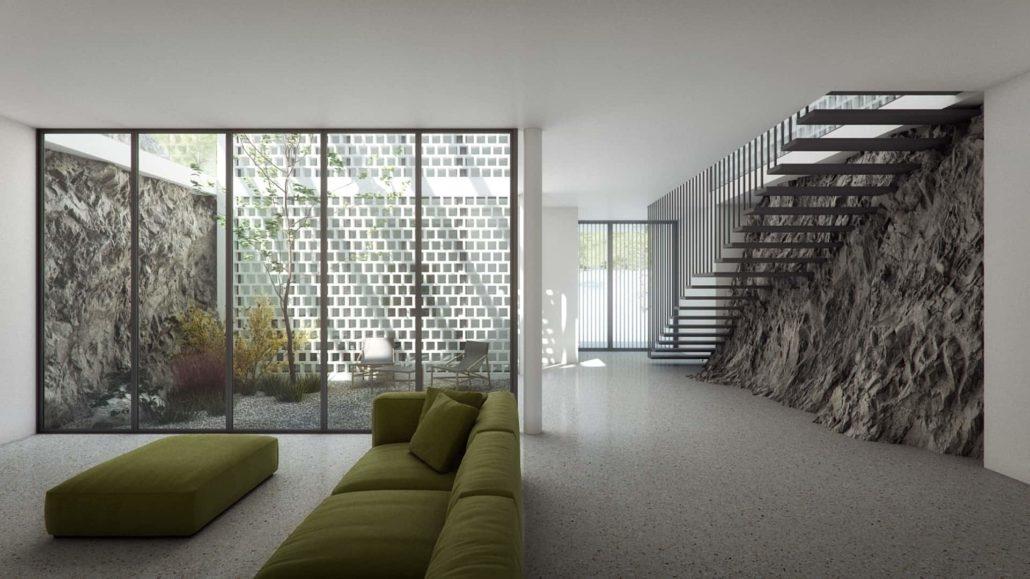
As detailed by journalist Anita Budimir in Jutarnji List's feature on the Villa Kuk project, Branka Juras of the Faculty of Architecture and a former employee of regarded Croatian architectural studio Randić & Turato architects. Her latest project, Villa Kuk, is being undertaken by Juras and the team she has assembled within her own practice.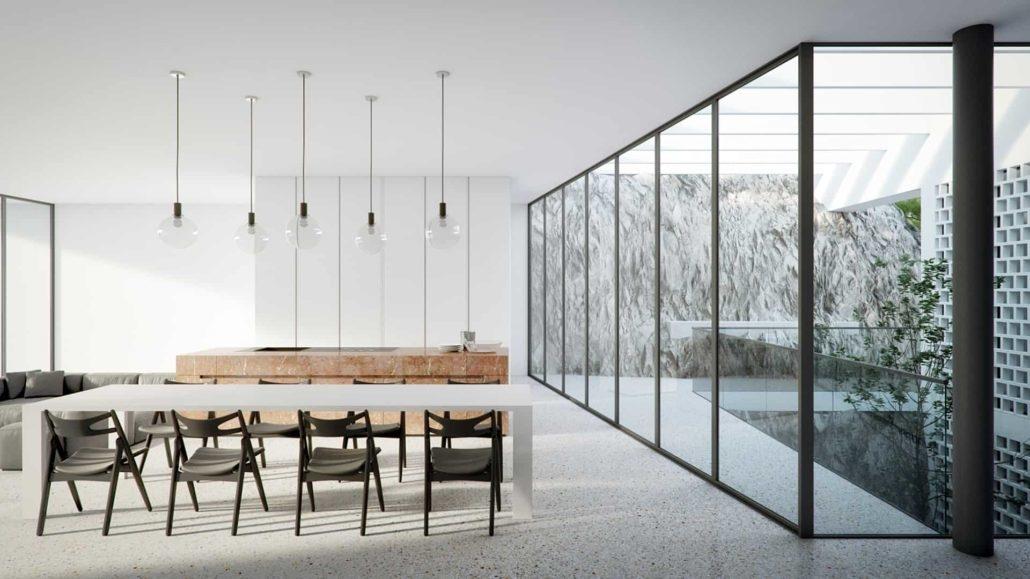
Villa Kuk will be situated at 110 metres above sea level in the Velko Brdo area of Makarska, in the foothills of the Dinaric Alps immediately to the north of the city centre. Its west and east walls will be comprised of the huge, natural boulders between which the villa will sit. The villa will only be visible from the north and south, which will hold its constructed facades.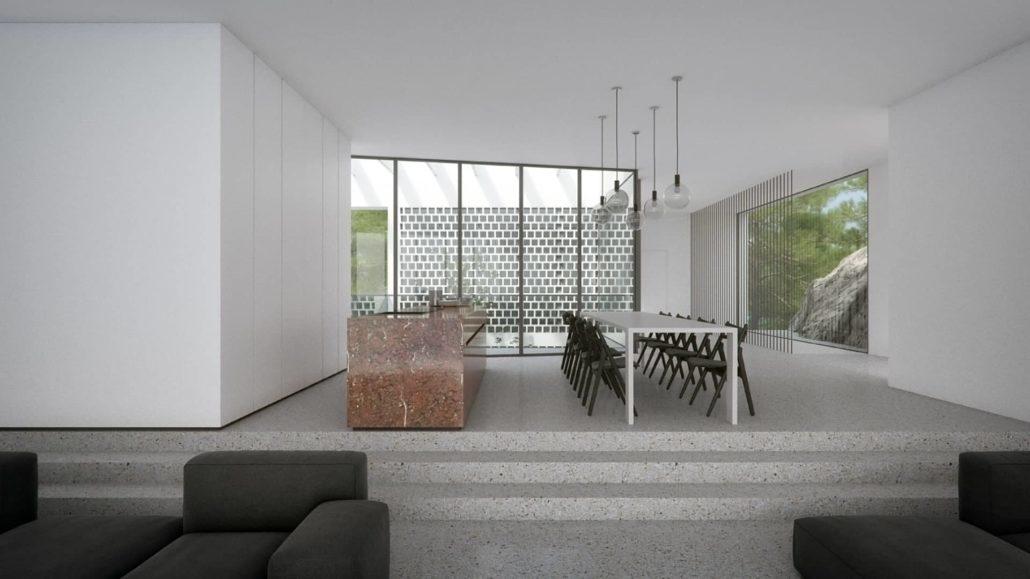
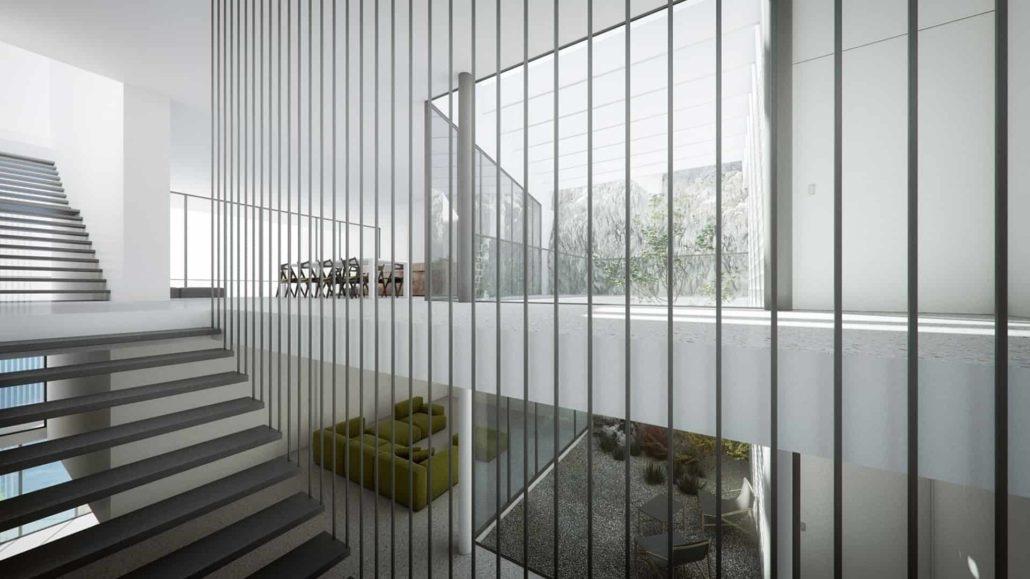
The south façade will use large glass walls, gifting a widescreen view of the open sea. A minimalist but luxurious contemporary design is planned for the interior. The project is actually a radical overhaul of a building that previously stood in the plot – a restaurant.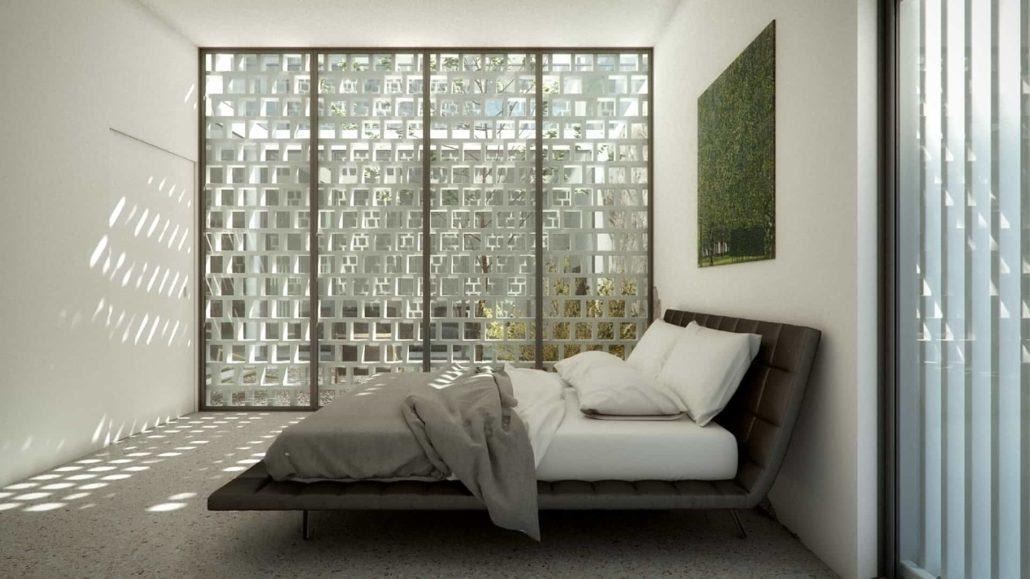
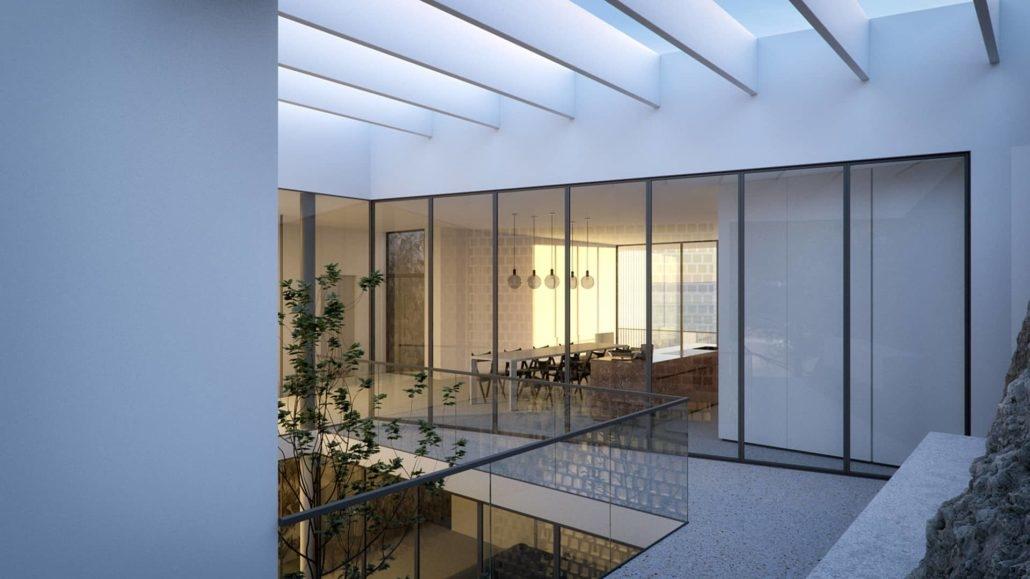
The villa will consist of a basement, ground floor and a roof area, which was used as a terrace by the restaurant. An atrium has been added to the dwelling's redesign, affording additional light and the basement space extended to accommodate extra living space. Though radical in design and ambition, the height of the building does not extend beyond the height of the rocks between which it is sandwiched, ensuring Villa Kuk will have minimal impact on the area's natural and existing aesthetics.
All 3d visualisation images of the completed Villa Kuk project by Marijan Katić
Split-Dalmatia County Tourism Numbers: County Tourist Board Director Reflects on 2020
January 12, 2021 - A look at the Split-Dalmatia County tourism numbers in 2020 as revealed by County Tourist Board Director Josko Stella.
Slobodna Dalmacija reports that in Split-Dalmatia County last year, 1.2 million tourists stayed in commercial accommodation and realized more than eight million overnight stays. Thus, in 2020, Split-Dalmatia County recorded 34 percent of arrivals and 45 percent of overnight stays compared to the record 2019.
Split-Dalmatia County Tourist Board Director Joško Stella estimates that after a significant decline in tourist arrivals and overnight stays in the first half of the year, marked by the COVID-19 pandemic which interrupted travel around the world, encouraging recovery was recorded in July and then continued growth in foreign guest arrivals in August.
“After the inclusion of Split-Dalmatia County on the red list at the end of August, there was a significant drop in the number of arrivals and overnight stays from the markets of Germany, Poland, Austria, Slovenia and Slovakia in September compared to September last year, which was extended until the end of the year, especially after the introduction of lockdown throughout Croatia which made it impossible to hold Advent events, while facilities were closed and hotel NYE events canceled,” says Stella.
Thus, despite numerous difficulties in commercial accommodation in 2020 in the area of Split-Dalmatia County, 1,238,260 tourists realized 8,073,385 overnight stays, so in the whole of 2020, there were 34 percent of arrivals and 45 percent of overnight stays compared to the record year 2019.
Most foreign guests came from Poland, Germany, the Czech Republic, and Slovenia, and the largest number of overnight stays was realized in Split, Makarska, and Omis, and Baška Voda.
Stella adds that the data on tourist traffic in the county's commercial accommodation should also include those from nautical tourism in which 82,179 arrived in Split-Dalmatia County in 2020, who recorded 567,465 overnight stays, thus achieving 36 percent of the traffic from 2019. Most arrived from Germany, Austria, the Czech Republic, Poland, and Slovakia.
In 2020, Split Airport recorded 20.4 percent of passengers compared to the record 2019, i.e., 674.3 thousand passengers. Split Airport should return to traffic from 2019 in 2024.
In March last year, almost all European airports were closed, including Split, where regular international traffic continued only on May 29 and gradually grew until August 20. At that time, Croatia was painted red on the epidemiological maps of Europe, so the arrival of passengers stopped due to the suspension of flights.
Therefore, in 2020, Split Airport had only 40 percent of flights compared to 2019, with an average aircraft occupancy of 50 to 60 percent.
Given that rapid implementation of vaccination is expected worldwide in 2021, the airport and the County Tourist Board expect that a return to the 2019 results could be achieved in 2024.
They also believe that accepting the aviation industry's proposal to apply a single antigen test to all departing passengers at airports with fast test results, which would avoid quarantine in incoming countries, would be a significant incentive for passengers to use air transport and speed up their return to 2019 results.
For the latest travel info, bookmark our main travel info article, which is updated daily.
Read the Croatian Travel Update in your language - now available in 24 languages.
Join the Total Croatia Travel INFO Viber community.
PHOTOS: Extraordinary Plants of Klis Fortress Show Two Sides of Dalmatia
January 2, 2021 – High on the mountains, overlooking the city of Split, the historic settlement of Klis stands on the border between two distinct climate regions – the Mediterranean and the Dalmatian hinterland. The sometimes rare and extraordinary plants of Klis Fortress are characteristic of both. A new book details the flora you can find on both sides of the Dinaric Alps
The views from Klis are spectacular. The great city of Split lies below you, perched on the edge of the glistening Adriatic, beyond it, the islands of Čiovo, Šolta, Brac, Vis and Hvar. It's a view that has been admired for over 2000 years.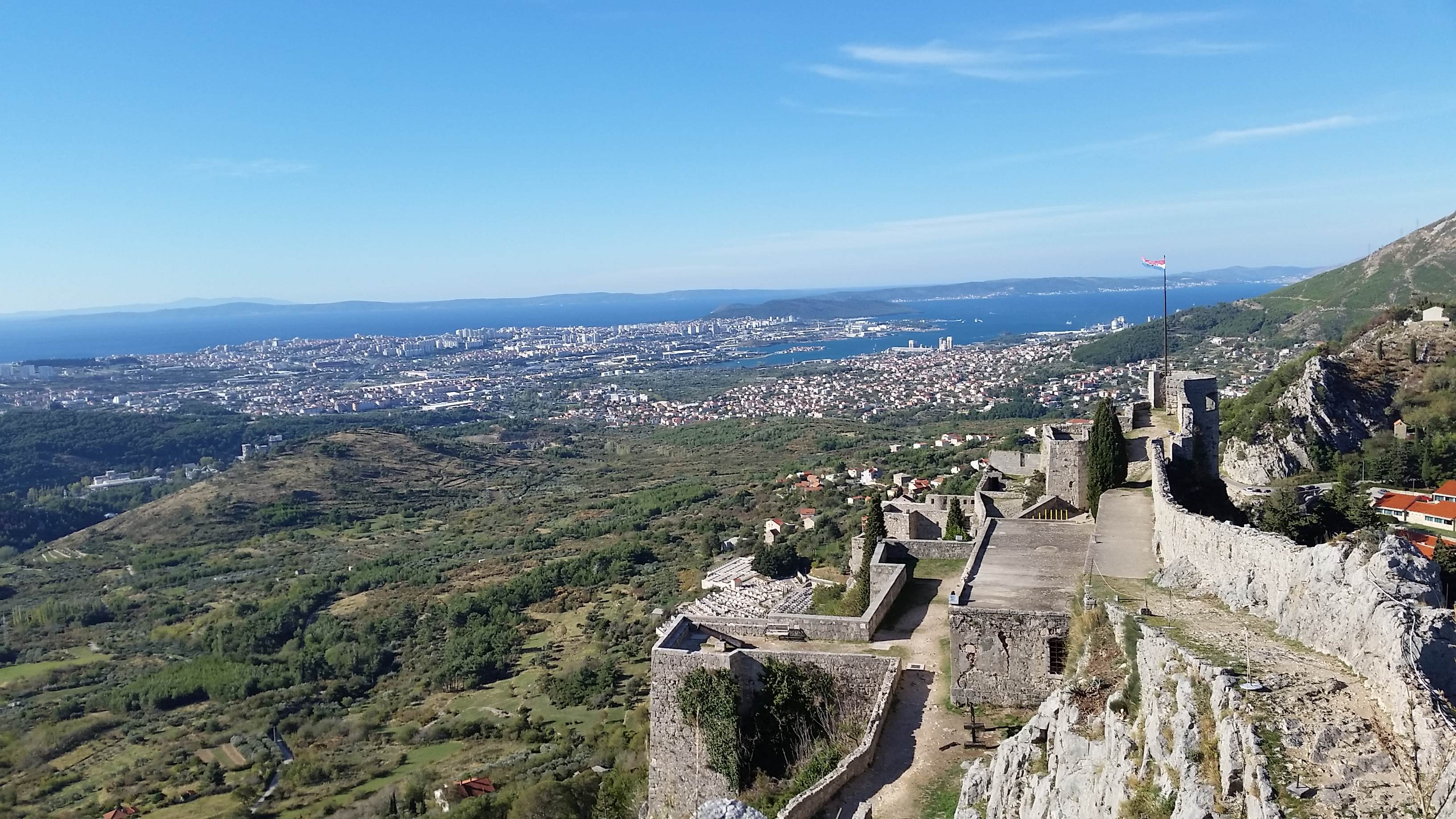 The view from Klis Fortress
The view from Klis Fortress
That's how long a fortress has stood here. Restructured and rebuilt several times over the millennia, within the walls of the impressive Klis Fortress lie much of the recent history of these lands – of the Illyrians and the Romans, the arrival of both Slavic people and of Christianity, the defence of Christian Europe from the Ottomans. So steeped in history are these walls, little wonder the fortress was chosen as a filming location for the popular Game Of Thrones series.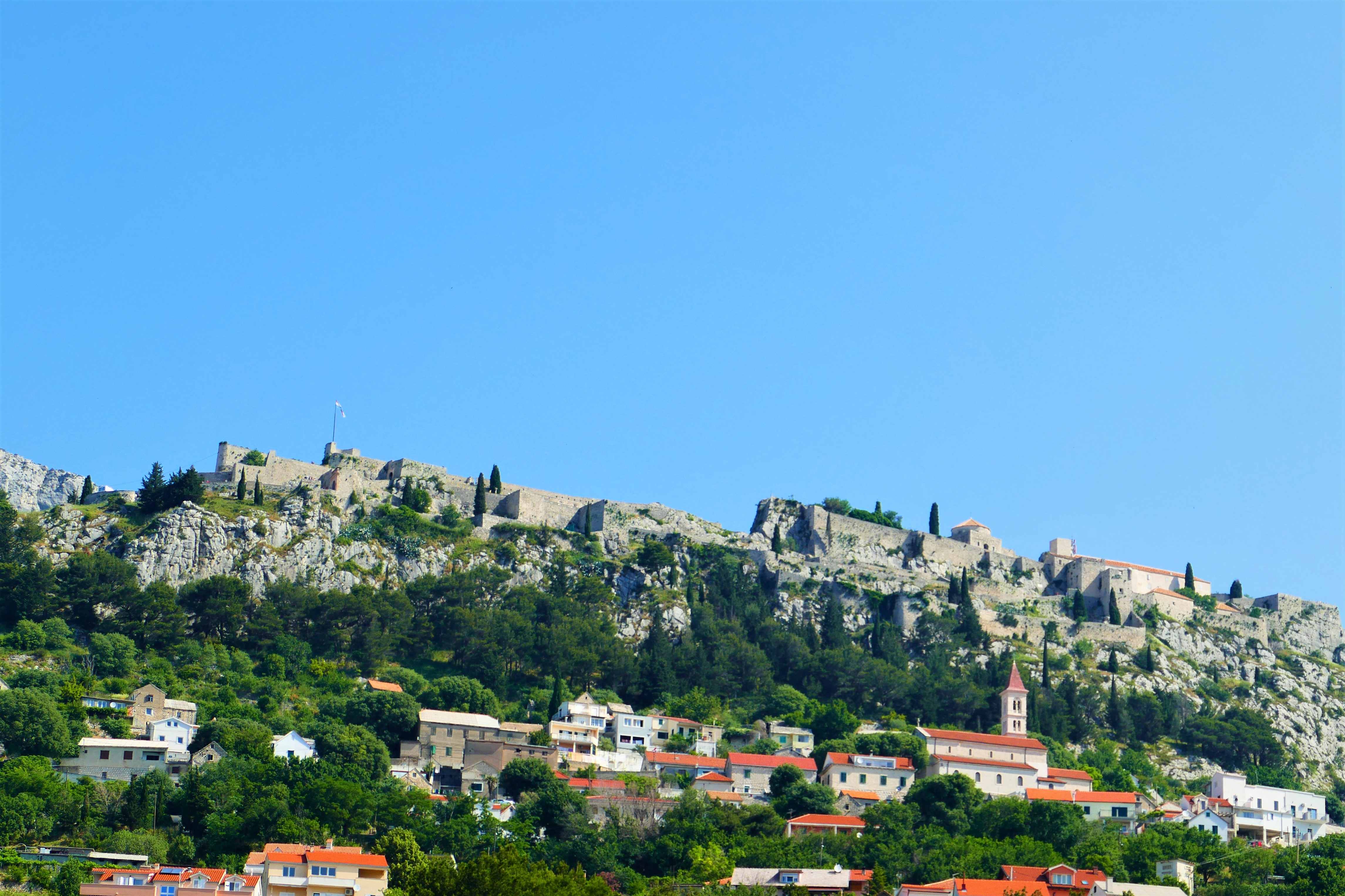 Klis Fortress
Klis Fortress
With its view so irresistibly inviting the eye, you could be forgiven for missing the plants of Klis Fortress. That's unfortunate. The fort straddles the top of the Dinaric Alps – one half existing within the sub-Mediterranean climate of the Dalmatian hinterland, the other on the distinctly warmer side of the Adriatic. This creates a unique environment for a wealth of flora. Not used as a fortress since the threat of Ottoman invasion subsided, these days the structure usually welcomes only tourists. The plants of Klis Fortress have reached into the grounds of the buildings, indeed into its very walls.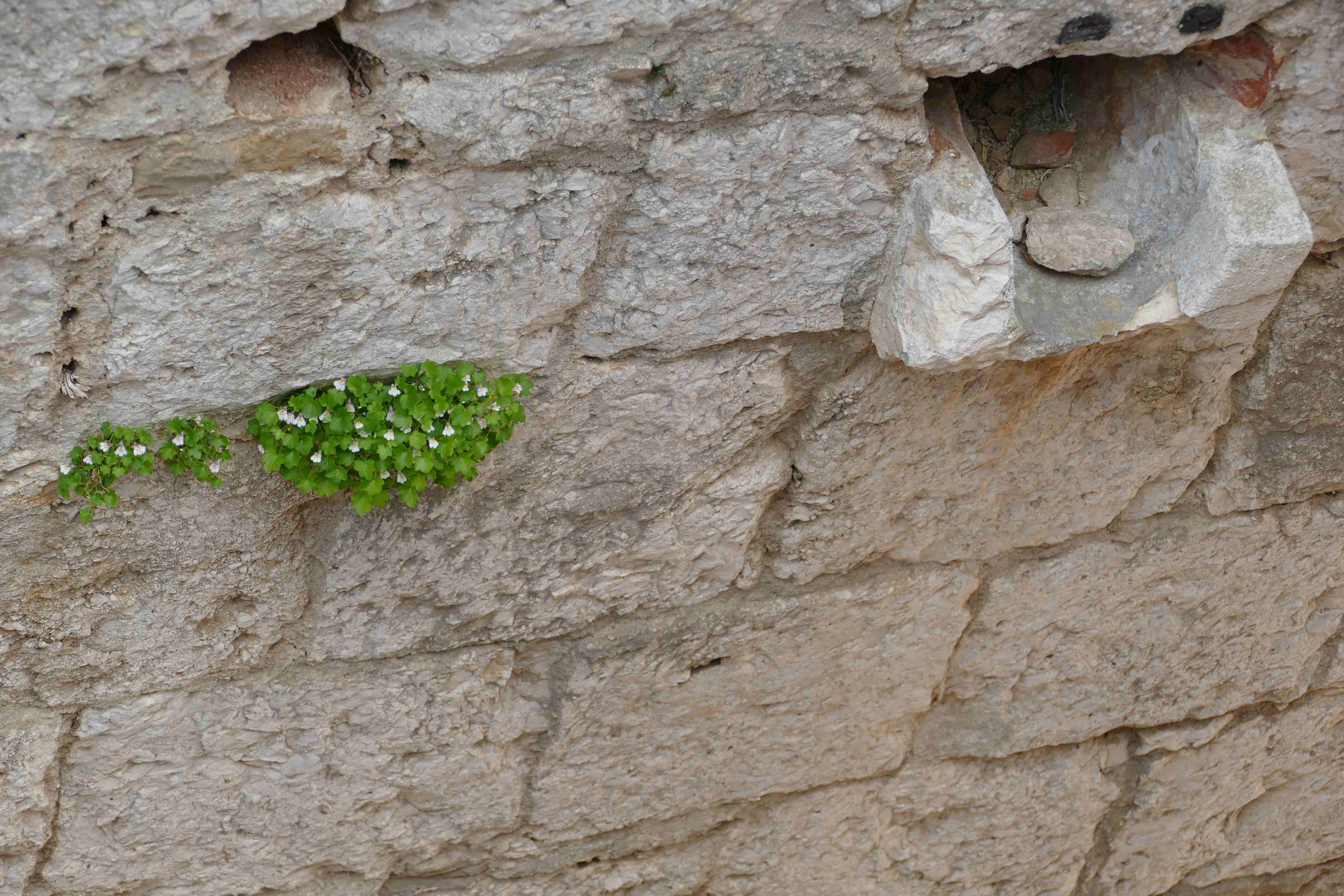 Cymbalaria muralis - Ivy Leaved Toadflax within the walls of Klis Fortress
Cymbalaria muralis - Ivy Leaved Toadflax within the walls of Klis Fortress
One person for who the plants of Klis Fortress did not go unnoticed is Ivan Limić. He lived in Klis all of his life, before leaving to get his degree, then a masters, at the Forestry department of the University of Zagreb. Today, he works for the Institute for Adriatic Crops and Karst Reclamation (IAC) on a PhD student's position. Having a specific interest in botany, he knows the plants of Klis Fortress better than most and after he met botanist Vedran Šegota of Herbarium Croaticum while in Zagreb, they decided they should work on a project together. After several years of work, that project - a book, 'Biljke Tvrdave Klis (Plants of Klis Fortress)' – has finally been released. Although helmed by co-authors Vedran and Ivan, it has actually been a project that involved a much greater group of contributors, not least the community of Klis and some of the best botanists in Croatia.
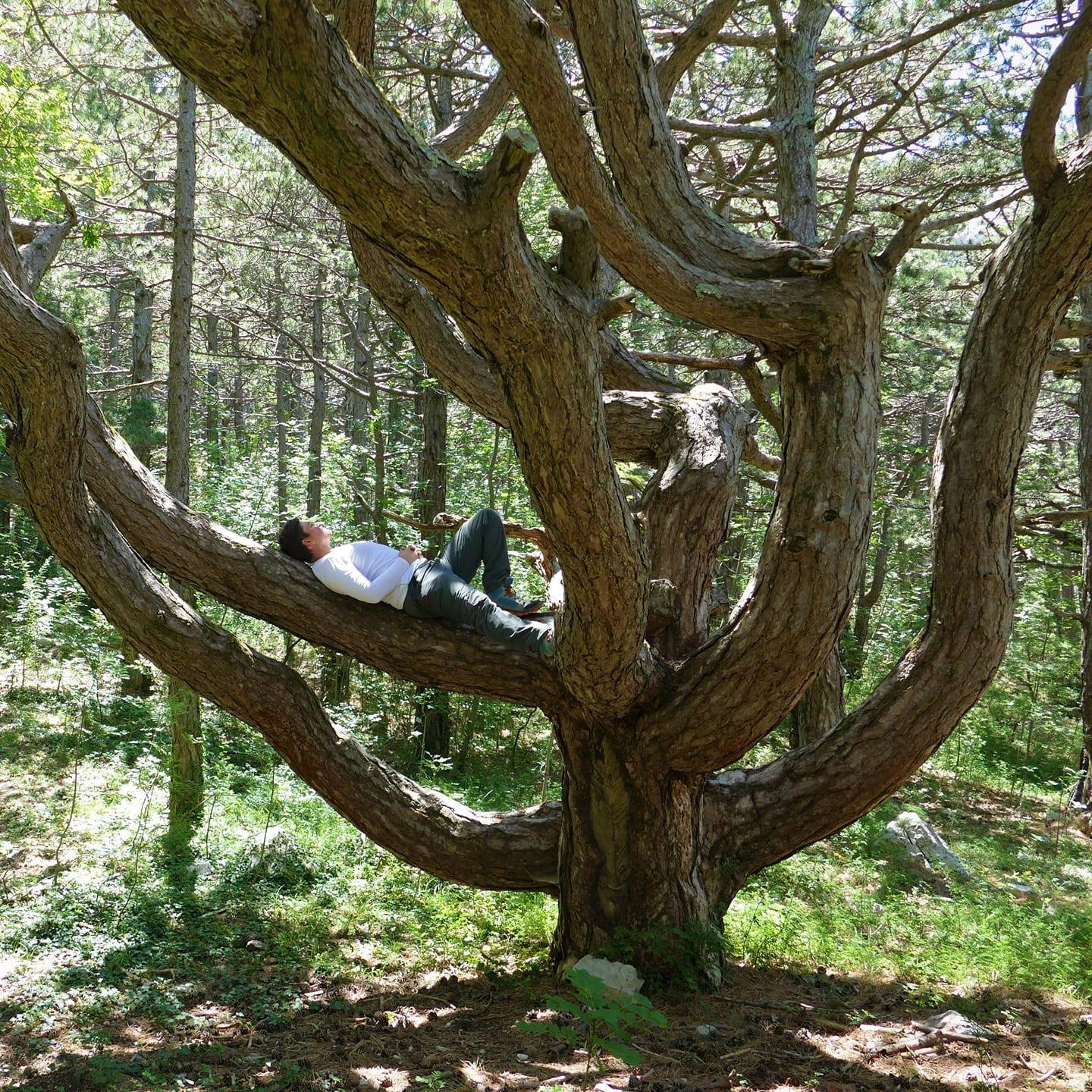
Ivan Limić, co-author of 'Plants of Klis Fortress', relaxing in a Black Pine
TCN talked with Ivan Limić to find out more about the book and about the plants of Klis Fortress
I first met Vedran when I started volunteering at Herbarium Croaticum Zagreb. I was in the city doing my degree. My main interests are forest silviculture and soil erosion, karst melioration, assessment of atmospheric deposition, study of flora, plant determination in Mediterranean region forest ecosystems and the effects of forest fires in those areas. We talked about doing a joint project because we shared similar interests. Vedran came to visit me in Klis and I wanted to show him around the fortress, but looking specifically at the flora. That's when we decided we should do a book about the plants of Klis Fortress.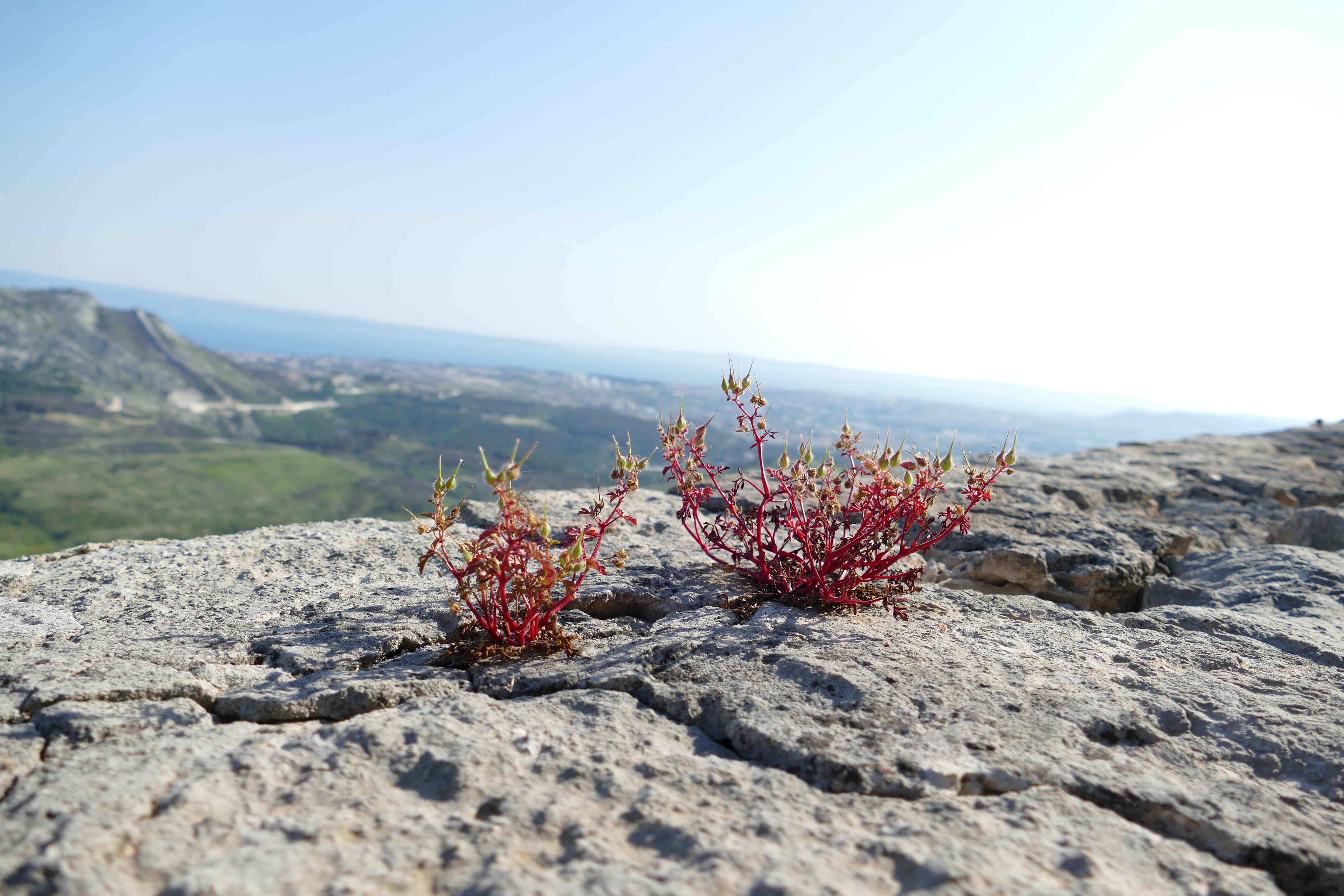 Geranium purpureum, the little-robin
Geranium purpureum, the little-robin
I walked around Klis Fortress all my life. When you live in a place, you not only acquire so much information about that place over the years, you also have an emotional connection to it. That's not something you can read in every book. Hopefully, with our book, we managed to get a sense of that emotional attachment across, so that you can really feel the place.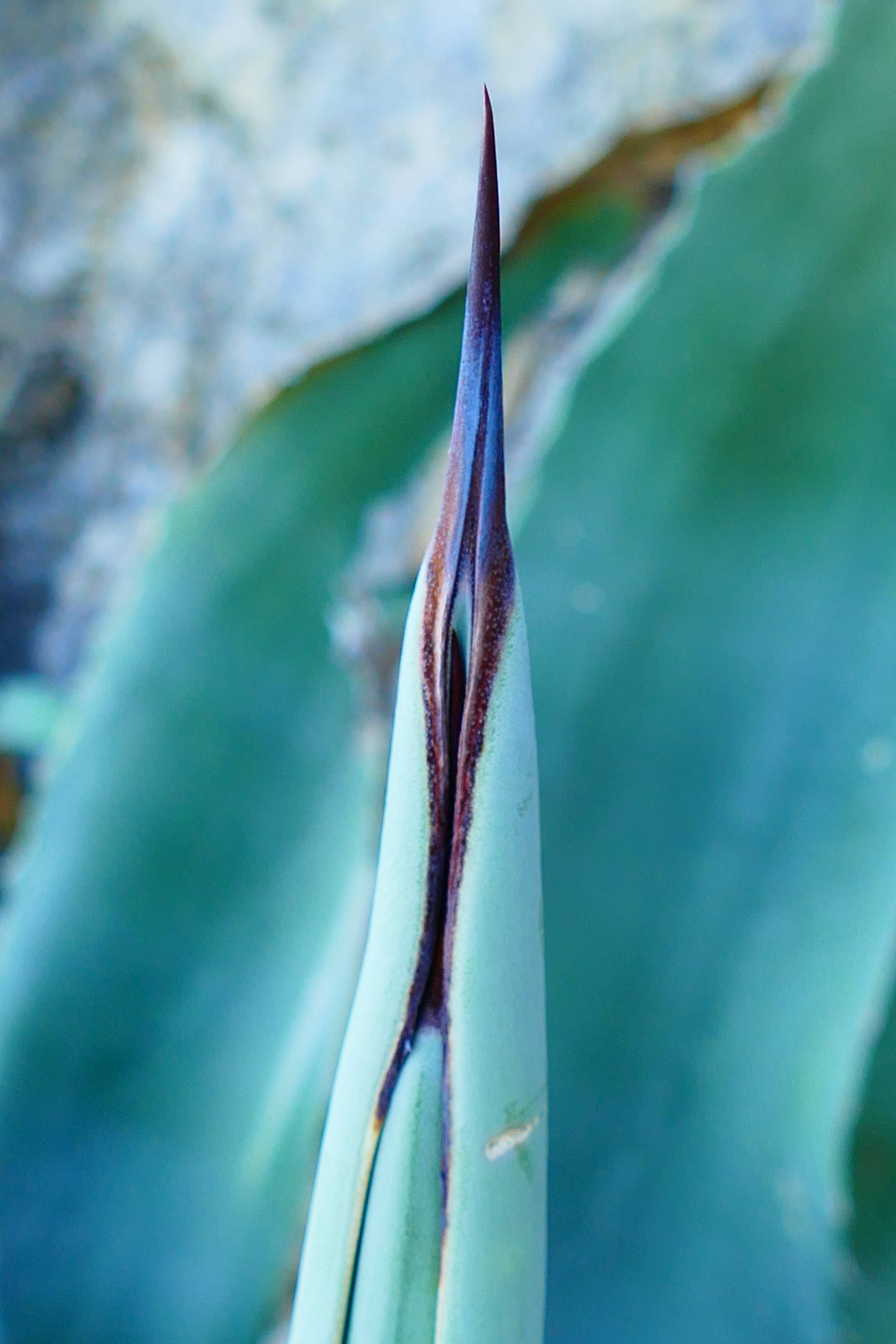 Agave americana
Agave americana
In a way, the special thing about the plants of Klis Fortress is that they are not so special at all – they are extremely characteristic. But, they are characteristic of two completely different climate regions.
On the south side of Klis Fortress, it is very warm and sunny – the Mediterranean climate. You can find species like Aleppo pine. On the northern side of Klis Fortress, it is colder – the sub-Mediterranean climate. Here, you can even get snow in winter and the most common species is Black pine. Two completely different climate regions in just a 50 metre stretch diagonally along the ground. That's what makes it extraordinary.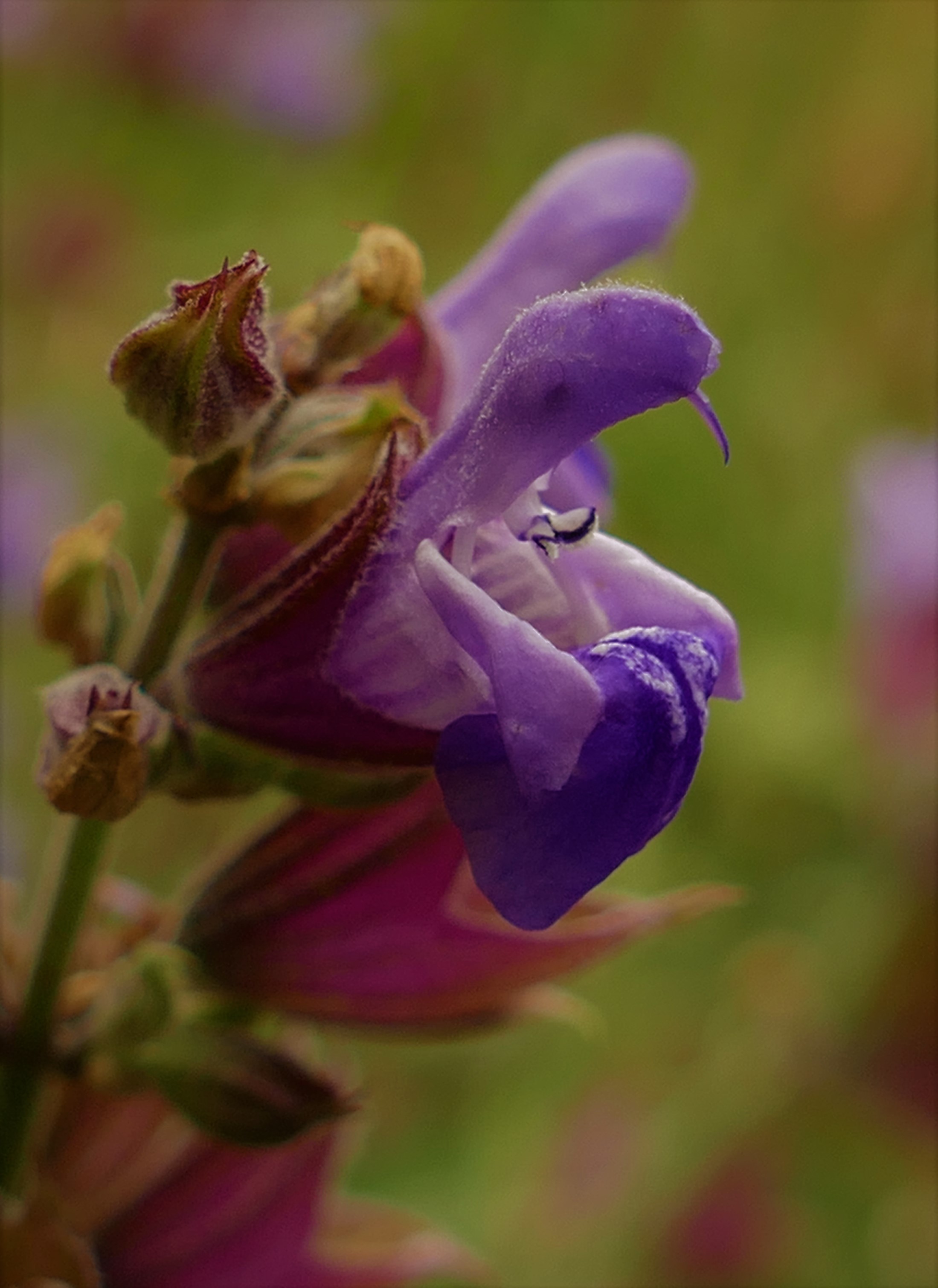 Salvia officinalis (sage)
Salvia officinalis (sage)
The plants of Klis Fortress include more than 300 species. We have around 100 of them listed in the book. Of those, 16 are species endemic to this area. Some of those are extremely rare - you can find them in very few places in Croatia - such as Fibigia triquetra. That plant is actually one of the reasons why this book exists. When I was a child, people used to tell me that some of the plants of Klis Fortress were very unusual and very rare. I used to walk around the fortress, looking at all the plants, trying to guess which ones were the unusual and rare species.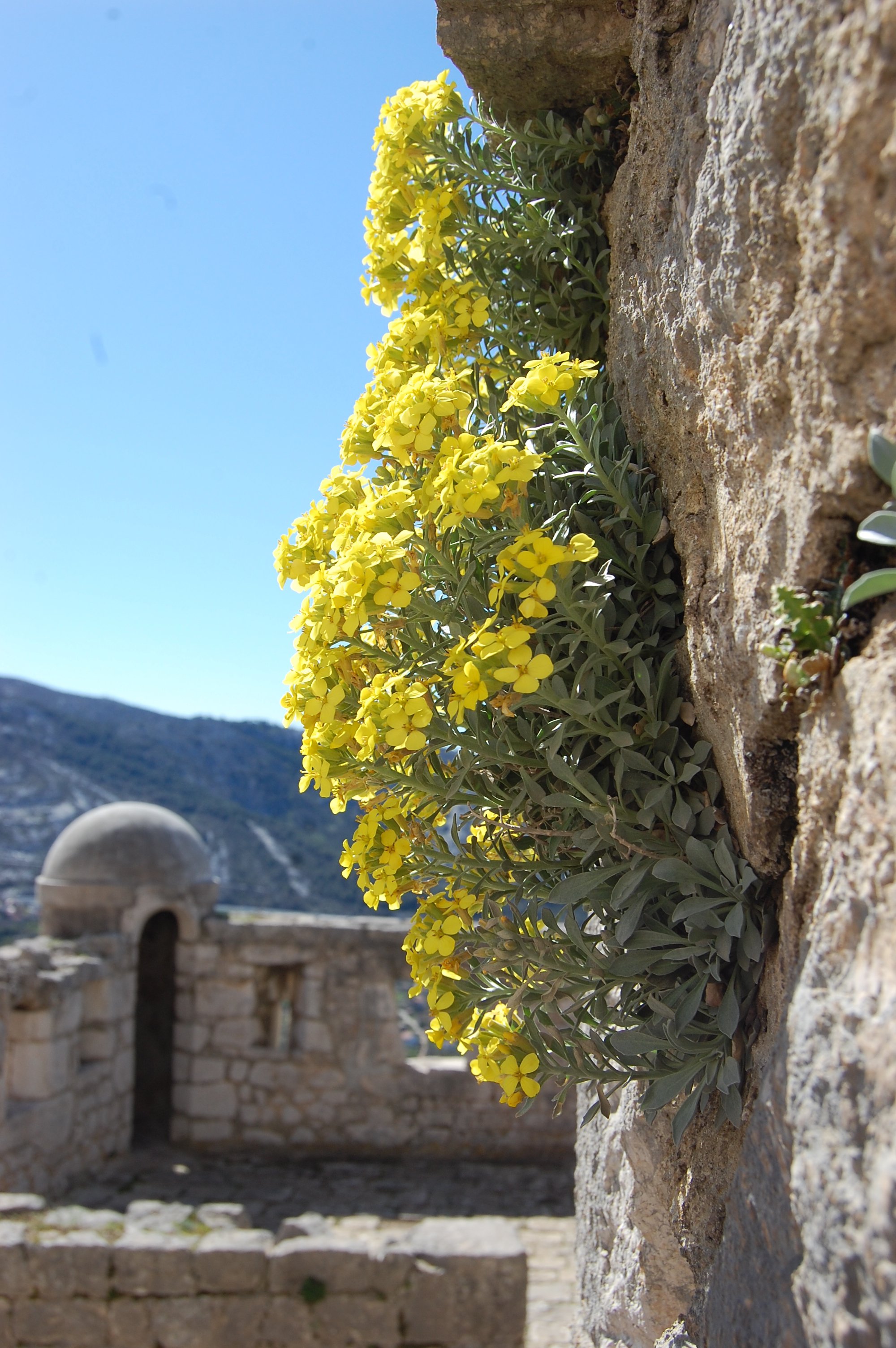 Fibigia triquetra
Fibigia triquetra
The man who first identified this as a unique, endemic species actually discovered his first specimen inside Klis Fortress. All of the studies and writings he made about the plant were done here. That plant is now the symbol of Klis Fortress.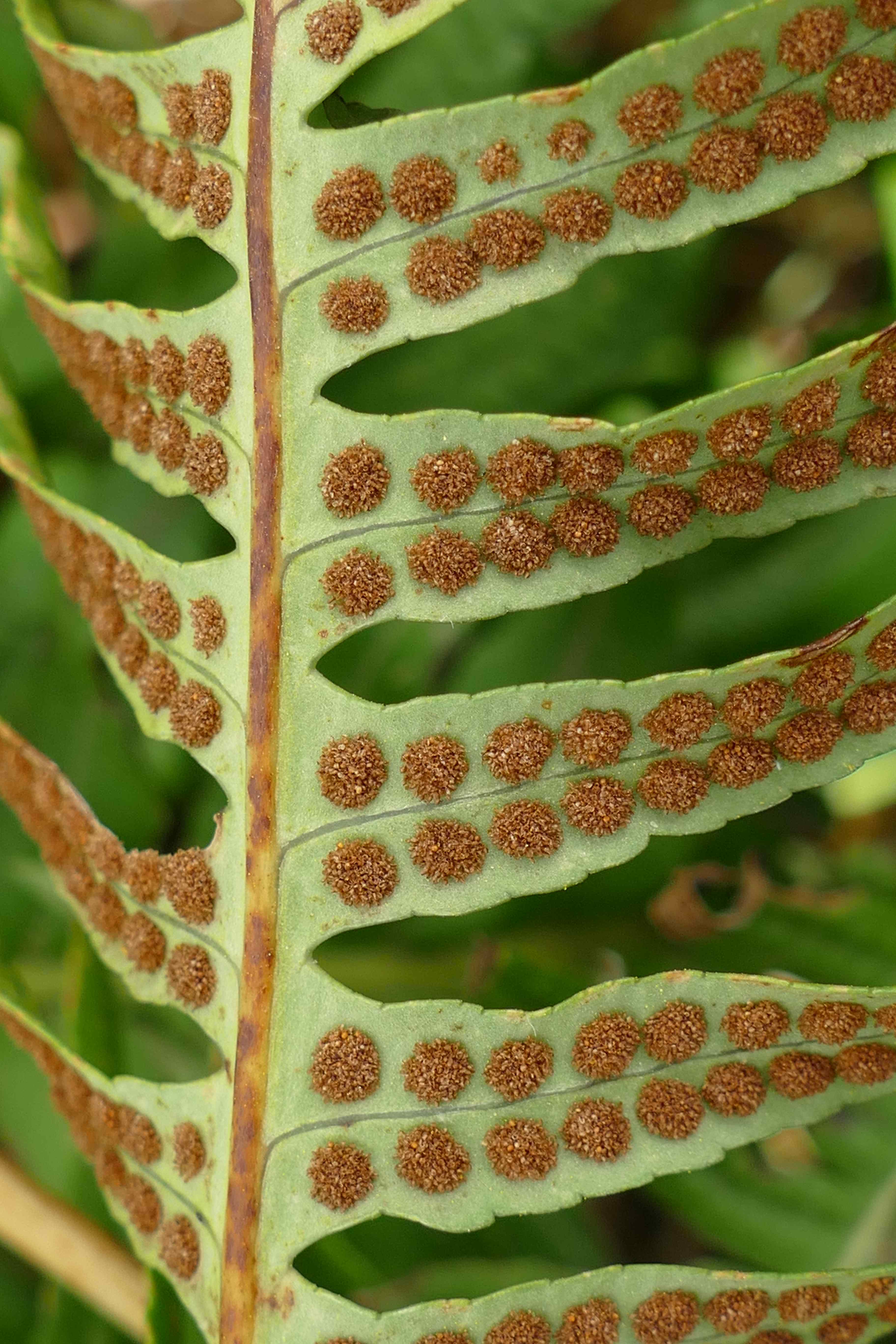 Polypodium cambricum
Polypodium cambricum
You can find our book in Klis library. Anyone can borrow it. It's also available at the entrance to Klis Fortress, where you buy the tickets. We wanted to give the opportunity to anyone who comes here to learn about the plants of this region – that's why we made such an effort to have the book in five languages. It was designed as a guide to the plant species of the whole Mediterranean mountain region in Croatia, so it's not just for the plants of Klis Fortress or the people who come to Klis Fortress itself.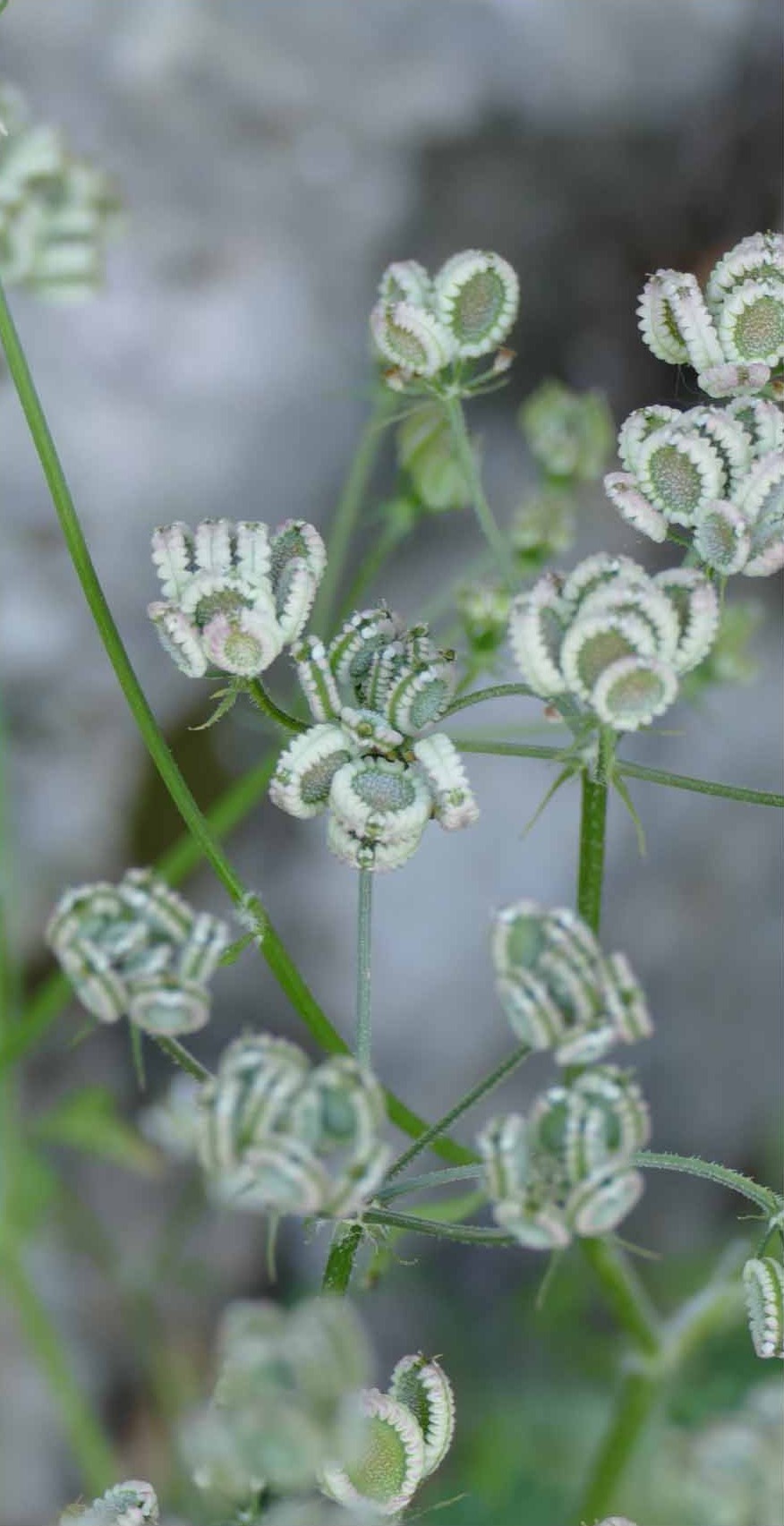 Tordylium
Tordylium
Most of the photography in the book was done by ourselves. It was important to take the photographs across four different seasons. That's one of the reasons it took almost two years to write this book.
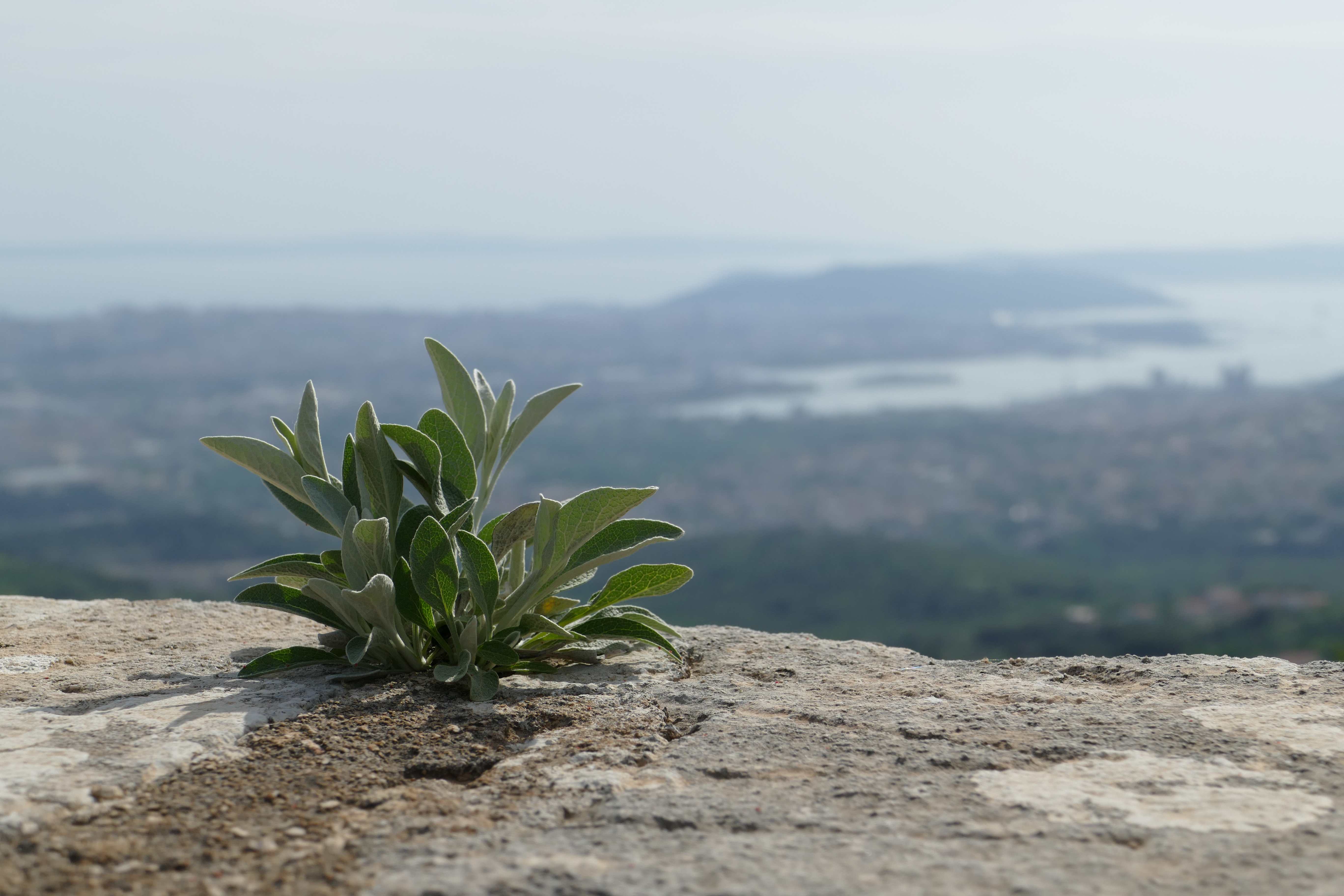 Inula Verbascifolia
Inula Verbascifolia
As we were making progress on the book, people in Klis began to find out what we were doing. It ended up becoming a project of the wider community. The mayor of Klis supported the project financially so that we were able to publish the book professionally and the library of Klis edited and published the book.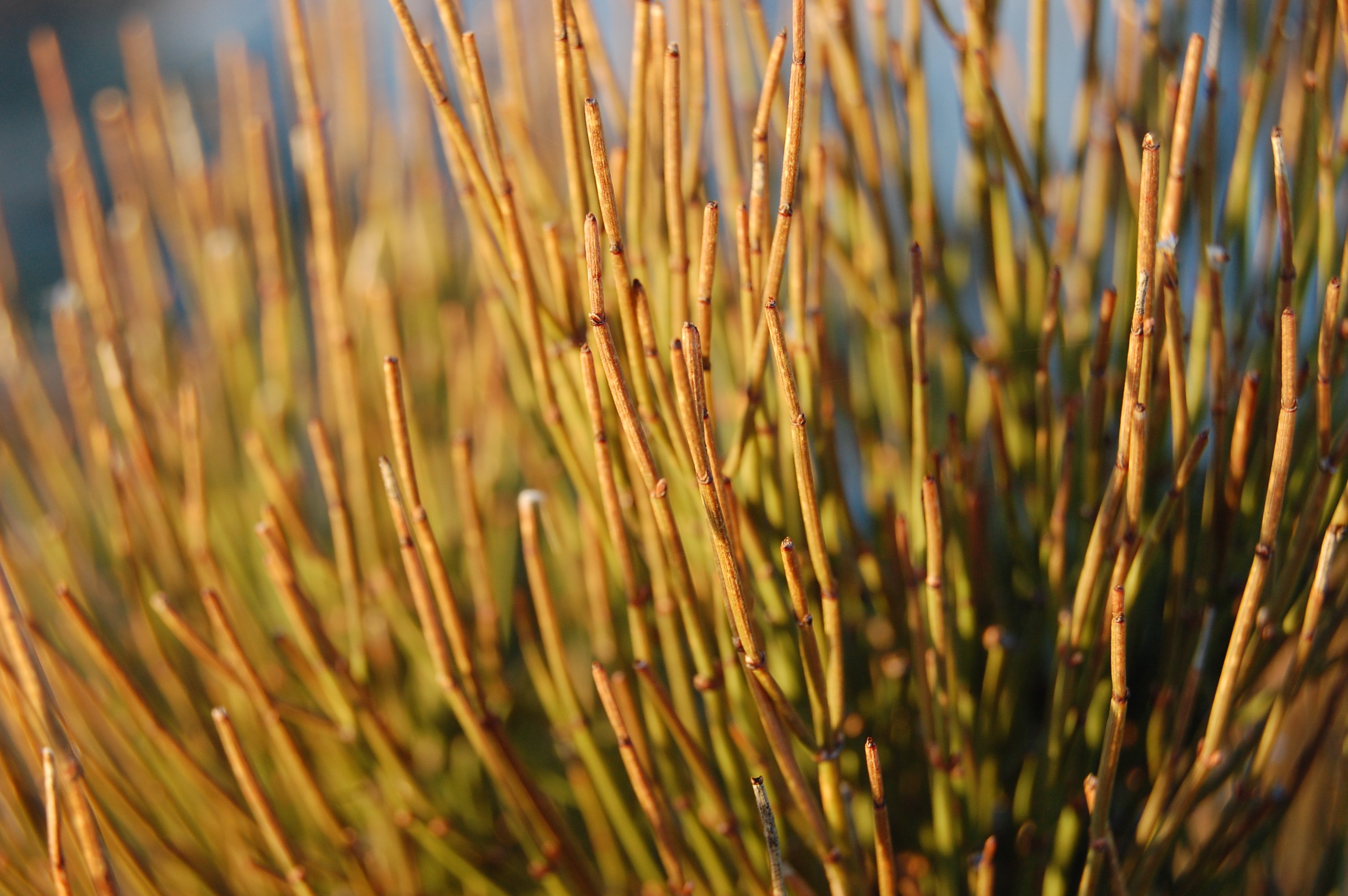 Ephedra major
Ephedra major
Others contributed to the design of the book and the translations, of course. Almost all of them donated their time and work to the project for free. It is quite difficult to translate some of this specific text correctly and we wanted to get it absolutely right. 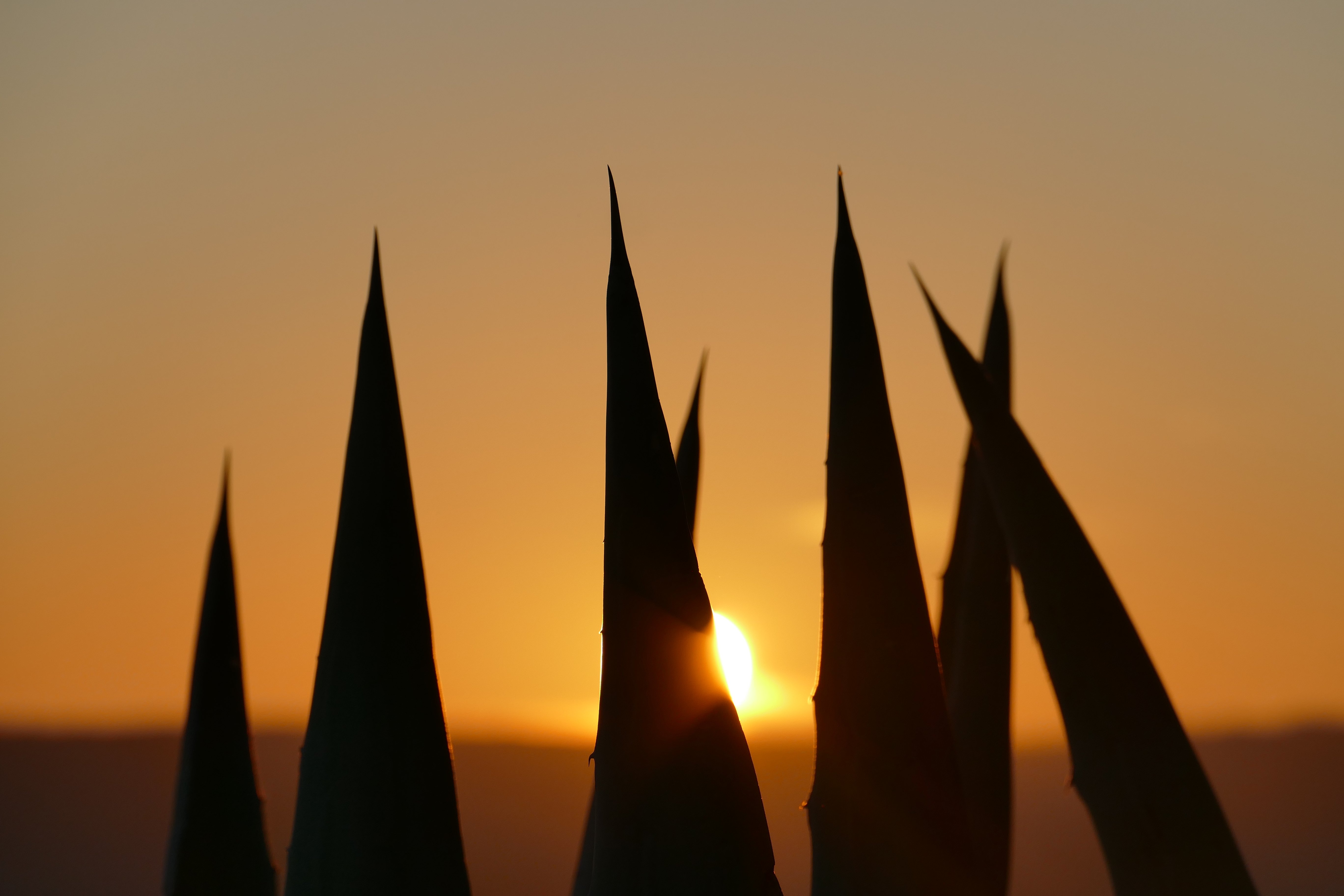 Agave americana
Agave americana
In the end, we ended up getting contributions from Italy and France, we had one colleague from the French embassy who helped and some of the best botanists we have in Croatia contributed to the book to make sure everything was absolutely correct. For that reason, the book was approved and recommended by the Botanical Society of Croatia and can be found in the Botanical library.
All images © Ivan Limić / The Plants of Klis Fortress


